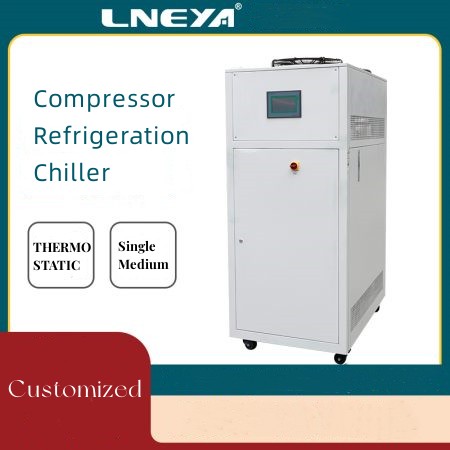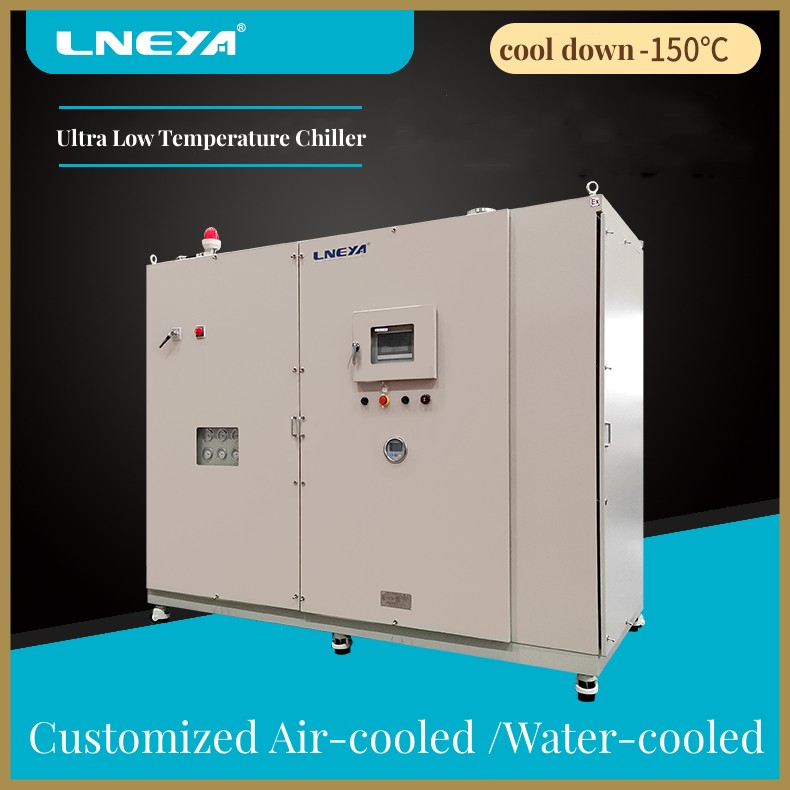Nachrichten

Einfluss der Temperatur auf Reaktionen der chemischen organischen Synthese
Organic synthesis is a common chemical phenomenon in chemistry. Temperature has an important influence on it during the whole synthesis process. As the temperature rises, the heat-absorbing reaction will speed up, resulting in a significant change in the equilibrium constant; once the temperature decreases, The exothermic reaction will be accelerated. Endothermic and exothermic, as the main characteristics of organic synthesis reactions, need to be paid enough attention to by researchers in t...
Details anzeigenZu beachtende Punkte bei der Auswahl von industriellen Heiz- und Kühlmaschinen
In food factories, pharmaceutical factories, biology, new material processing, and chemical plants, the raw materials in the reactor need to be cooled rapidly during the industrial production process involved in the reactor. In order to achieve the purpose of rapid cooling, it is necessary to directly cool down the reactor, so as to achieve the purpose of indirectly reducing the temperature of the material in the reactor. At present, there are about three temperature control schemes for tempe...
Details anzeigen
Wie lauten die Bedingungen für die Decarboxylierungsreaktion und die Steuerung der Prozesstemperatur?
The decarboxylation of aromatic acids is easier than that of fatty acids. For example, benzoic acid can be decarboxylated by adding a little copper powder as a catalyst in quinoline solution and heating. When a strong electron-withdrawing group is attached to the α-C of the carboxylic acid, heating can make it decarboxylate more smoothly. For example: when the ortho-diaromatic organic acid is heated, it is easy to remove a carboxyl group, but when the temperature is low, an acid anhydride w...
Details anzeigen
Notwendigkeit der Temperaturkontrolle bei der fraktionierten Destillation der Destillation
The pharmaceutical and chemical industry involves many chemical reactions, and with the continuous development of the pharmaceutical and chemical industry, there is a great demand for such instruments. The traditional open cooling and heating constant temperature bath is not efficient, and the temperature range of the fully enclosed high and low temperature all-in-one machine can reach -120 degrees to 200 degrees, which can meet the needs of many enterprises. The high and low temperature all...
Details anzeigen
Temperierung von Titanreaktoren in der chemischen, pharmazeutischen und chemischen Industrie
The advantages and trends of titanium reactors in the daily chemical and pharmaceutical industries, titanium reactors will play a huge advantage in the future. Reaction equipment used to complete processes such as sulfonation, nitration, hydrogenation, alkylation, polymerization, condensation, and many other processes of organic dyes and intermediates. It has excellent properties such as super corrosion resistance, non-magnetic, high temperature resistance, pressure resistance, and bio-affin...
Details anzeigenKühlung und Heizung des Reaktors und das Prinzip der Nutzung
Cooling and heating circulator thermostats are commonly used with glass reactors for biochemical instruments. They are widely used in modern fine chemicals, biopharmaceuticals, scientific research and experiment industries. They can be concentrated, distilled, Will stay, separate and purify the reaction. In the production process, whether it is a double-layer glass reactor or a single-layer glass reactor, the refrigeration heating temperature control system can generally complete high tempera...
Details anzeigen
Precautions for purchasing reactor temperature control system
The reactor temperature control system is applied in the reaction tank for cooling, heating, and temperature control. It has the function of providing low and high temperatures, and can meet the different needs of different customers. Therefore, what should everyone pay attention to when purchasing? 1. Before purchasing, everyone should pay attention to the temperature control status, model, structure, material specifications, capacity, power factor, after-sales service, etc. of the reaction...
Details anzeigen
Der Grund, warum der Kühlthermostat Chiller plötzlich nicht mehr startet
If there are any unexpected situations during the use of the cooling thermostat Chiller, it is important to promptly identify the specific reasons before resolving them, in order to effectively address various issues. For example, what is the reason why the cooling thermostat Chiller suddenly fails to start during operation? One、 The reason why the cooling thermostat Chiller cannot start 1. The main reason is that during the operation of the system, the pressure at the equipment inlet is l...
Details anzeigen
Kühl- und Heizungsthermostat für die Prüfung von elektronischen Bauteilen
If enterprises want the cooling and heating thermostats for electronic component testing to operate for a long time without any faults, they need to achieve the following points to maintain stable equipment performance. 1. Suitable working environment: Provide a better operating environment for cooling and heating thermostats for electronic component testing. Keeping the environment clean and tidy can reduce the impact of various types of dust on the cooling and heating thermostats for elect...
Details anzeigen
The Role of Chemical Refrigeration Temperature Control Unit
In pharmaceutical and chemical plants, the raw materials inside the reactors involved in industrial production require rapid cooling and cooling. In order to achieve this goal, the reactor undergoes direct refrigeration and cooling, thereby indirectly reducing the temperature of the materials inside the reactor. 1. There should be operational records that record the operation status of the unit, and maintenance technical files should be created. Detailed records are conducive to identifying...
Details anzeigen LNEYA Industriekühler Hersteller Lieferant
LNEYA Industriekühler Hersteller Lieferant










